We’ve all seen a fantasy movie or show and wished we could be one such fantasy character and, let’s be honest, run in a big flowy gown through buildings such as European cathedrals. Such ancient cathedrals are a sight to sore eye!
Cathedrals are primarily religious buildings; however, in a more historical context, they are landmarks and examples of architecture of the time they were built. These cathedrals have hundreds of years of stories to tell. They have been worshiped by generations and still stand as a historical landmark.
Germany is filled with cathedrals, and we are here to share a few of the oldest cathedrals in Germany.
8. Bamberg Cathedral
Year Built: 13th century
Locality: Bamberg, Bavaria
Architecture Type: Romanesque and Gothic
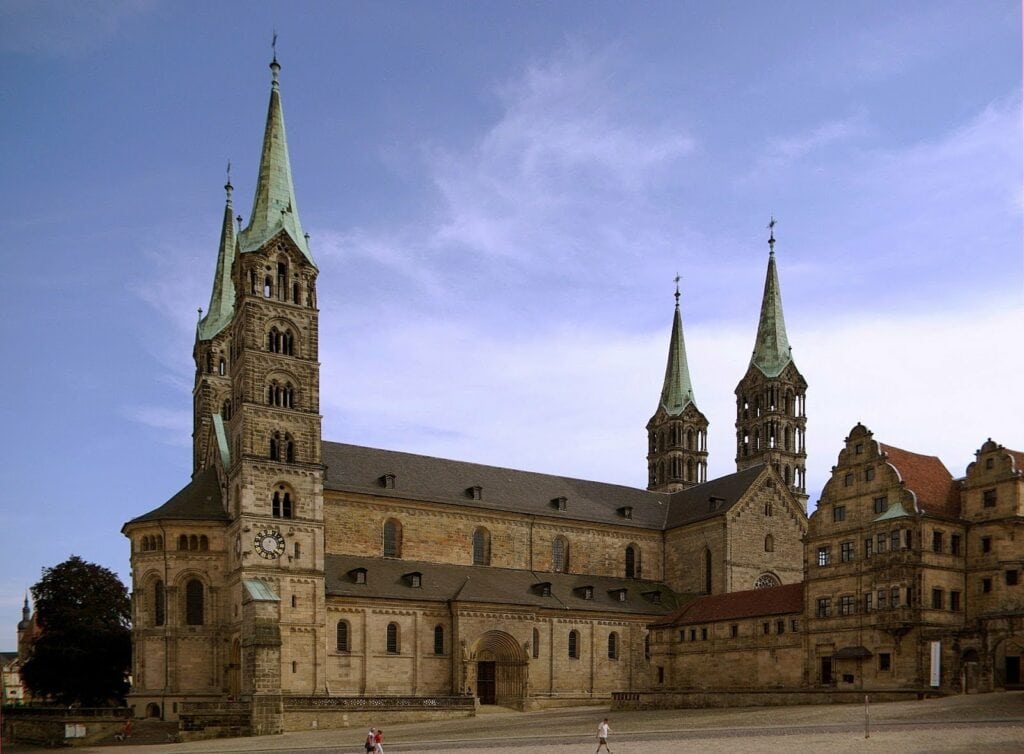
Bamberg Cathedral, also referred to as the Cathedral Church of St. Peter and St. George, is an architectural blend of both Romanesque and Gothic styles. Situated in Bamberg, Bavaria, this cathedral was constructed in the 13th century. The Romanesque features are evident in its fortress-like design, while the Gothic characteristics are evident in its graceful pointed arches and intricate stained glass windows.
The cathedral is approximately 94 meters long, 28 meters wide, and 26 meters high. Its four towers are each about 81 meters tall. The cathedral also contains the only papal grave in Germany, that of Pope Clement II, who served as Bishop of Bamberg.
Did you know?
In 1802/3, the Bishopric of Bamberg was secularized and became a part of the Electorate of Bavaria. It became an archdiocese in 1817, covering the dioceses of Speyer, Würzburg, and Eichstätt.
7. Merseburg Cathedral
Year Built: 13th century
Locality: Merseburg, Saxony-Anhalt
Architecture Type: Gothic
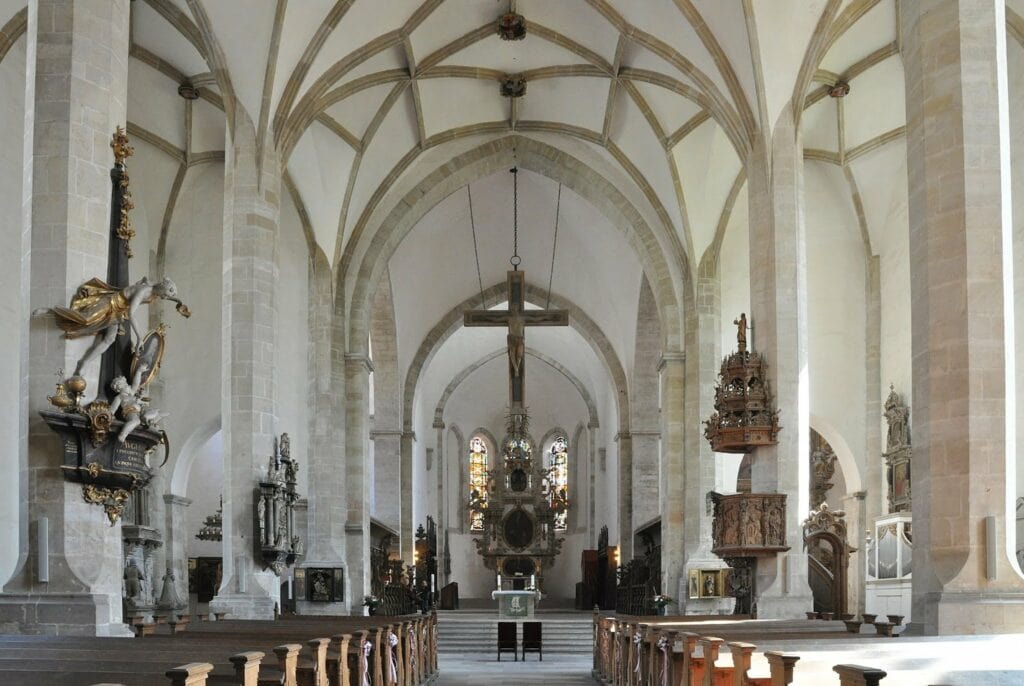
Merseburg Cathedral, originally dating to the 13th century, is located in the town of Merseburg in Saxony-Anhalt, Germany. The cathedral showcases a Gothic architectural style with soaring pointed arches, ribbed vaults, and large stained glass windows.
The hall crypt in the cathedral is one of the oldest, mostly unchanged structures of its kind in Germany. It provides a glimpse into the early architectural style of the cathedral. The cathedral underwent transformations over the centuries. In the 12th century, the western towers were rebuilt with late Romanesque upper levels. Gothic-style windows were added around the 13th century.
The cathedral has undergone several renovation efforts to restore its original look, including the removal of Baroque elements. Extensive work was carried out both on the exterior and interior, particularly after the reunification of Germany in 1990.
Did you know?
Martin Luther delivered a sermon in the cathedral in August 1545, reflecting its historical significance during the Reformation period.
6. Worms Cathedral
Year Built: 12th century
Locality: Worms, Rhineland-Palatinate
Architecture Type: Romanesque
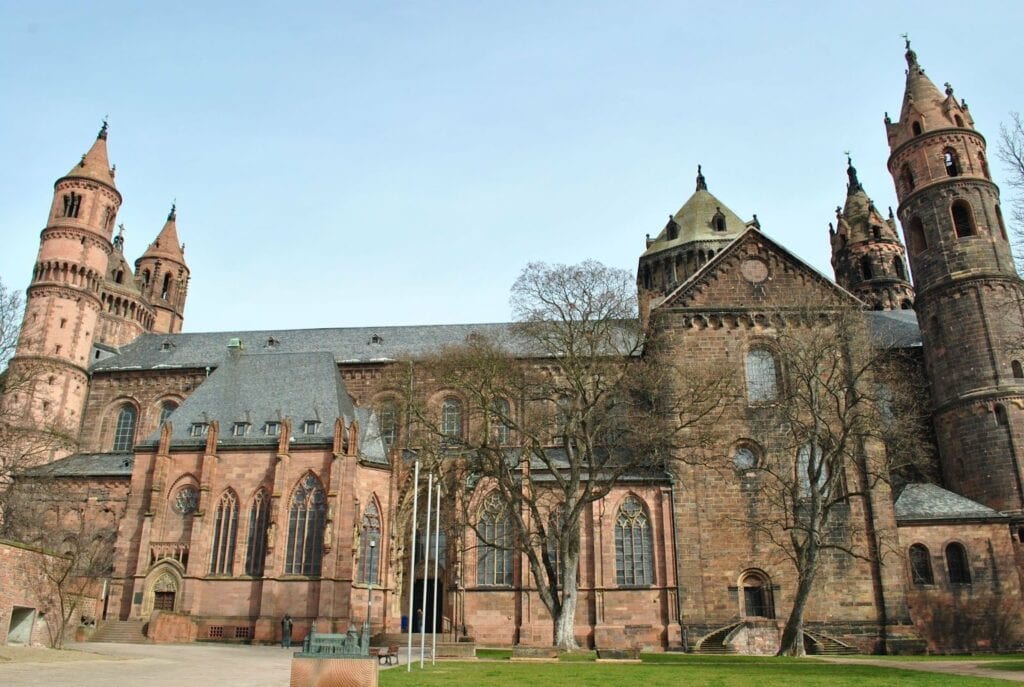
Worms Cathedral was built in the 12th century and is situated on the highest point in the inner city of Worms, a city in the Rhineland-Palatinate region of southern Germany.
The cathedral contains the sarcophagi and graves of notable individuals, including Salian princes and bishops of Worms. Some of these burials date back to the 10th century. The cathedral has undergone various renovations and restorations over the centuries, including a significant renovation that began in 1886 and lasted until 1935.
These renovations aimed to address structural weaknesses and damage sustained in earlier periods.
Worms Cathedral is a pier-basilica with two choirs, a transept, and a central tower. Its architectural style reflects a combination of Romanesque elements with some Late Romanesque and early Gothic features.
Did you know?
The cathedral witnessed several significant historical events, including the nomination of Pope Leo IX in 1048, the Concordat of Worms in 1122, the marriage of Emperor Frederick II to Isabella of England in 1235, and the Diet of Worms in 1521, where Martin Luther was condemned as a heretic.
5. Speyer Cathedral
Year Built: Early 11th century
Locality: Speyer, Rhineland-Palatinate
Architecture Type: Romanesque
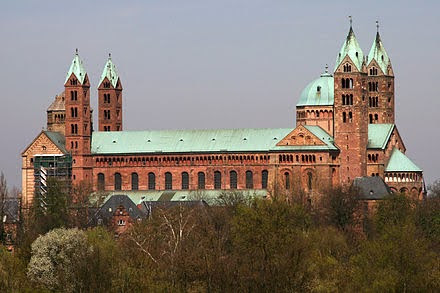
Speyer Cathedral, constructed in the early 11th century, represents Romanesque architecture in Germany. This UNESCO World Heritage site is located in the city of Speyer in Rhineland-Palatinate.
The cathedral’s huge red sandstone structure and the columns and arches help us recognize it as Romanesque architecture. It’s famous for being the final resting place for several German emperors from the Salian and Hohenstaufen dynasties.
The cathedral’s western part collapsed during the fire in 1689. During the Napoleonic Wars, the cathedral was used as a stable and storage facility. In the 19th century, restoration efforts took place under the direction of architects such as Franz Ignaz M. Neumann, leading to the reconstruction of the Romanesque nave.
Did you know?
Speyer Cathedral was designated a UNESCO World Heritage Site in 1981, recognized for its importance as a major monument of Romanesque art in the German Empire.
4. Hildesheim Cathedral
Year Built: 11th century
Locality: Hildesheim, Lower Saxony
Architecture Type: Romanesque and Gothic
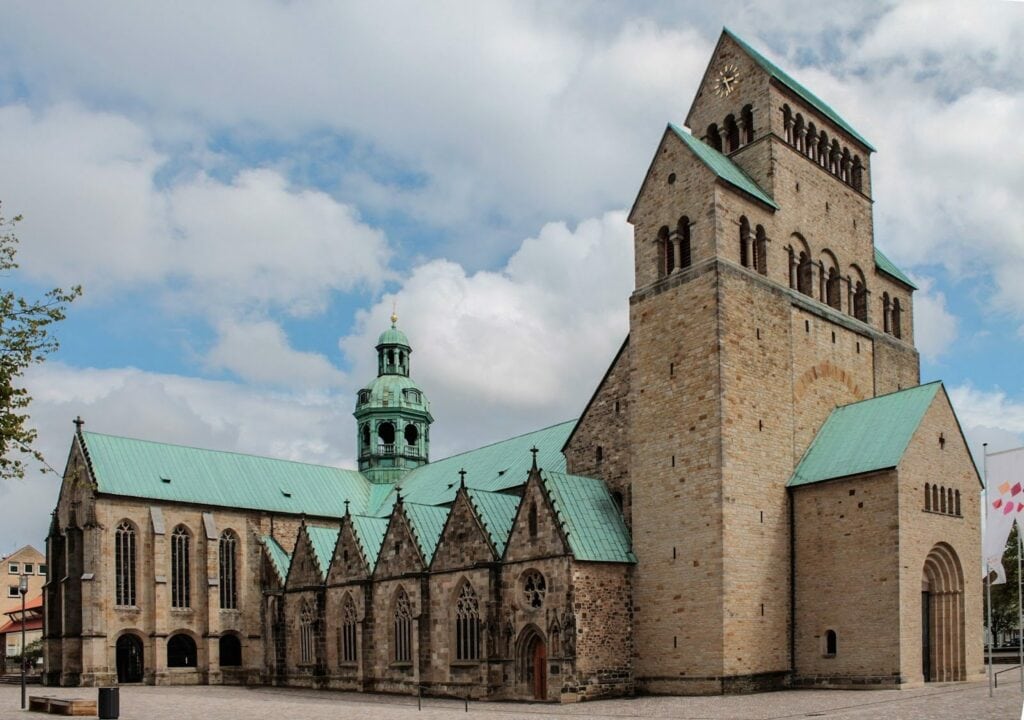
Hildesheim Cathedral, located in the town of Hildesheim, was established in 815 by Louis the Pious, and a Chapel of St. Mary was built then. This cathedral was constructed in the 11th century and is renowned for its exceptional blend of Romanesque and Gothic styles.
Hildesheim Cathedral is well-known for its design, highlighted by the rosebush window and the bronze doors crafted by the skilled artisan Bernward. These bronze doors are regarded as masterpieces of medieval artistry, and the cathedral holds UNESCO World Heritage status.
Did you know?
The cathedral suffered fire damage in 1046 but was later expanded under the leadership of Bishop Azelin and Hezilo of Hildesheim.
3. Mainz Cathedral
Year Built: Late 10th century
Locality: Mainz, Rhineland-Palatinate
Architecture Type: Romanesque, Baroque, and Gothic
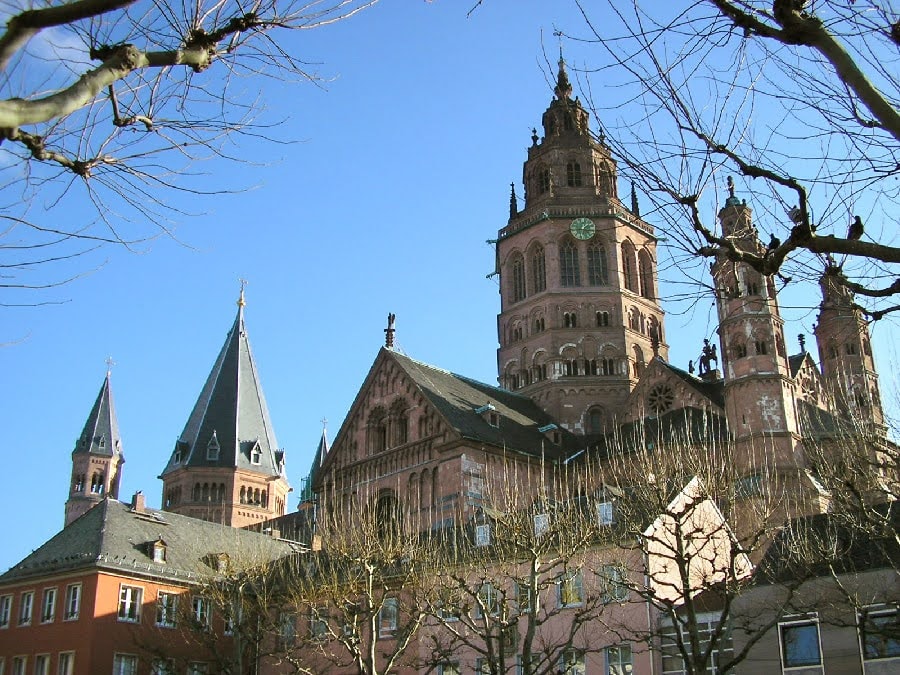
Mainz Cathedral, also known as St. Martin’s Cathedral, is a magnificent structure that dates back to the late 10th century. Situated in the city of Mainz, Rhineland-Palatinate, this cathedral boasts a rich history and a striking mix of architectural styles, including Romanesque, Baroque, and Gothic elements.
The cathedral underwent various renovations and reconstructions over the years. In 1009, it suffered extensive damage from a fire during its inauguration, but the main portions of the cathedral were completed by 1037. The eastern chancel was used for the Mass, while the western chancel was reserved for the bishop and pontiffs. Mainz Cathedral was one of the three “Kaiserdome” (Emperor’s Cathedrals) of the Holy Roman Empire, alongside Worms Cathedral and Speyer Cathedral.
Mainz Cathedral is known for its magnificent architecture, featuring a Romanesque west entrance and 20th-century Chagall windows, creating a blend of ancient and modern elements.
Did you know?
In the late 18th century, the cathedral suffered damage due to military conflicts. Bishop Joseph Ludwig Colmar initiated restoration efforts with support from Napoleon. A new iron cupola was added to the main eastern tower. However, it was later removed in 1870 due to its weight.
2. Magdeburg Cathedral
Year Built: 10th century
Locality: Magdeburg, Saxony-Anhalt
Architecture Type: Ottonian, Romanesque, and Gothic
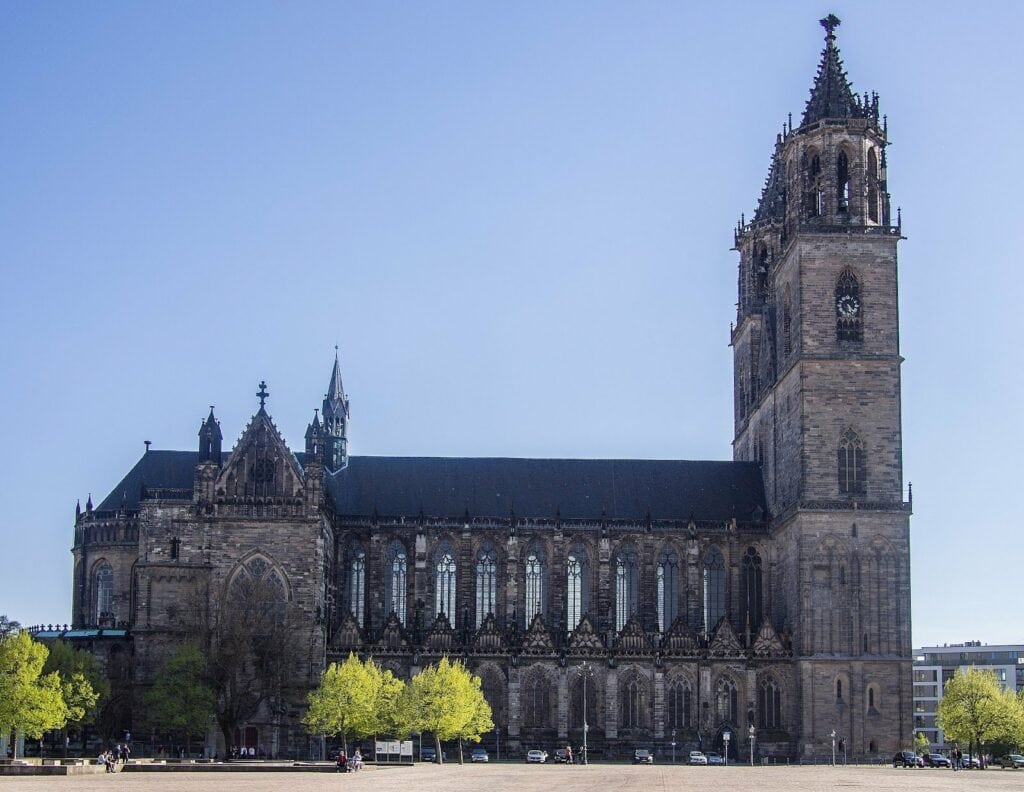
Magdeburg Cathedral, also known as the Cathedral of Saints Catherine and Maurice, stands as a main landmark in the city of Magdeburg and is known for its towering spires. It was constructed in the 10th century, making it one of Germany’s oldest cathedrals. Located in the city of Magdeburg, Saxony-Anhalt, this cathedral is a significant representation of the Ottonian architectural style.
The cathedral’s two spires and deep connection to the Holy Roman Empire make it an extraordinary historical landmark.
Did you know?
During the Thirty Years’ War, Magdeburg Cathedral provided refuge for a small group of survivors from the city, and it survived the war’s destruction.
1. Trier Cathedral
Year Built: 4th century
Locality: Trier, Rhineland-Palatinate
Architecture Type: Ancient Roman, Gothic, and Baroque
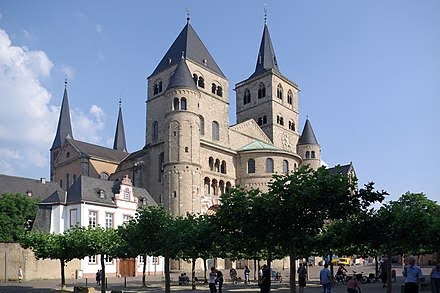
Trier Cathedral, also known as the Cathedral of Saint Peter, is one of the oldest cathedrals in Germany. Built in the 4th century, Trier Cathedral is located in the city of Trier, in the Rhineland-Palatinate region, and it has a rich history and stunning architecture that draws visitors from around the world.
According to some sources, Emperor Constantine the Great commissioned the construction of the cathedral and built it atop a palace belonging to his mother, Saint Helen
It holds relics such as the Holy Tunic, believed to have been worn by Jesus, and features Romanesque and Gothic elements, earning it a UNESCO World Heritage designation in 1986.
Did you know?
The cathedral faced destruction by Vikings in 882, but it was later rebuilt and expanded.
Conclusion
When these churches were new, they were merely places of worship. After a few hundred years, they became historical monuments praised for their beauty and architecture. These buildings have aged so gracefully that people from across the globe come here to see them. So, take a trip to Germany and see the life, art, and architecture of many before you.











